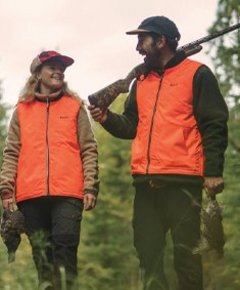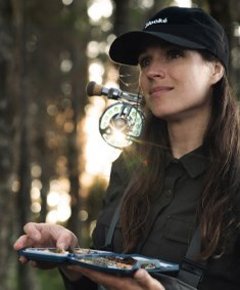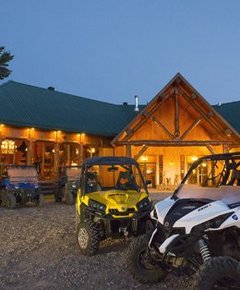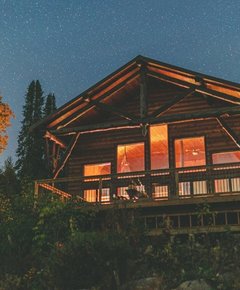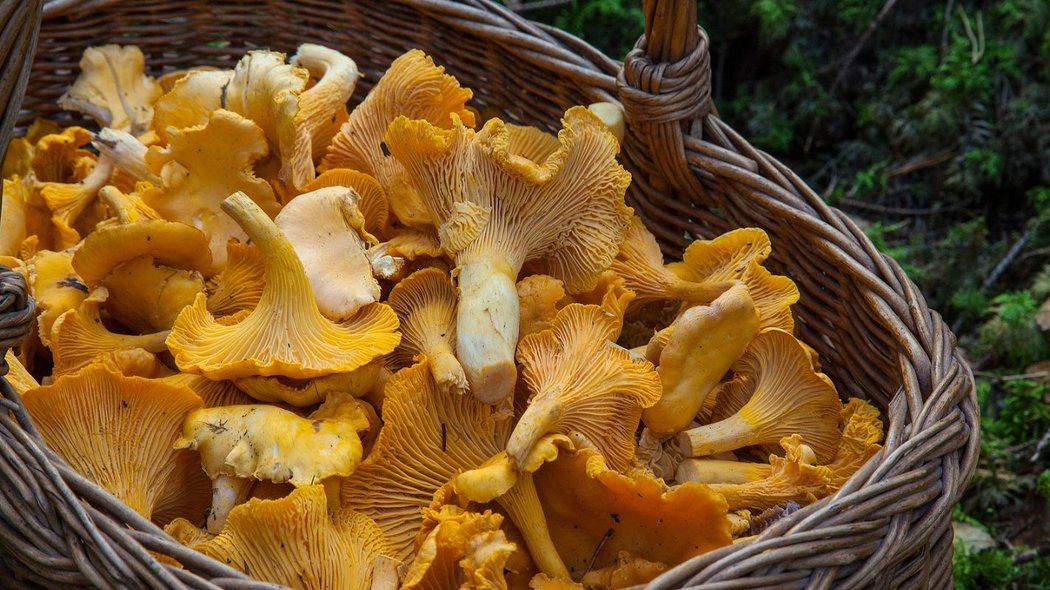
Identifying and picking forest plants and mushrooms is becoming an increasingly popular activity at our outfitters. Picture yourself enjoying a hot cup of tea made from freshly picked herbs or spicing up your catch of the day with some wild mushrooms! There are some key things you need to know, however, before venturing out on your own—and most importantly, before putting anything in your mouth.
Firstly, certain plants—but especially certain mushrooms—are poisonous, even fatal, if eaten. Before picking anything, it’s vital that you educate yourself. There are several excellent reference books on Quebec plants and mushrooms available. Make sure you learn the proper identification methods for plants and mushrooms before heading out into the forest.
Harvesting medicinal plants
Quebec forests are rich in medicinal plants. They are considered medicinal for their beneficial effects on our physical and/or mental health. Since all plants have their own set of properties, it’s essential that you first do some research to determine which ones are right for you.
The sought-after properties may be found in the above-ground parts of a plant, such as its leaves or flowers, while other properties may reside in the roots. For example, the wild sarsaparilla (Aralia nudicaulis), whose scientific name means ‘bare stem,’ is a plant that grows in mixed forests and whose roots have energizing properties. Chewing on it releases the sap, giving you a little energy boost.
Another example is the root of burdock (Arctium lappa L.), a common weed with burrs that stick to your clothes. This unpopular plant is a biennial, which means it forms a rosette of leaves in the first year and flowers in its second year. The root is harvested in its first year, ideally in the fall. Rich in inulin, this plant promotes the growth of healthy gut bacteria. But be careful! It should be eaten in moderation as it also detoxifies and cleanses the body, which can cause some intestinal discomfort. It should be avoided during pregnancy. Burdock root can be eaten raw but tastes better cooked in butter (yum!) and is eaten like other root vegetables.
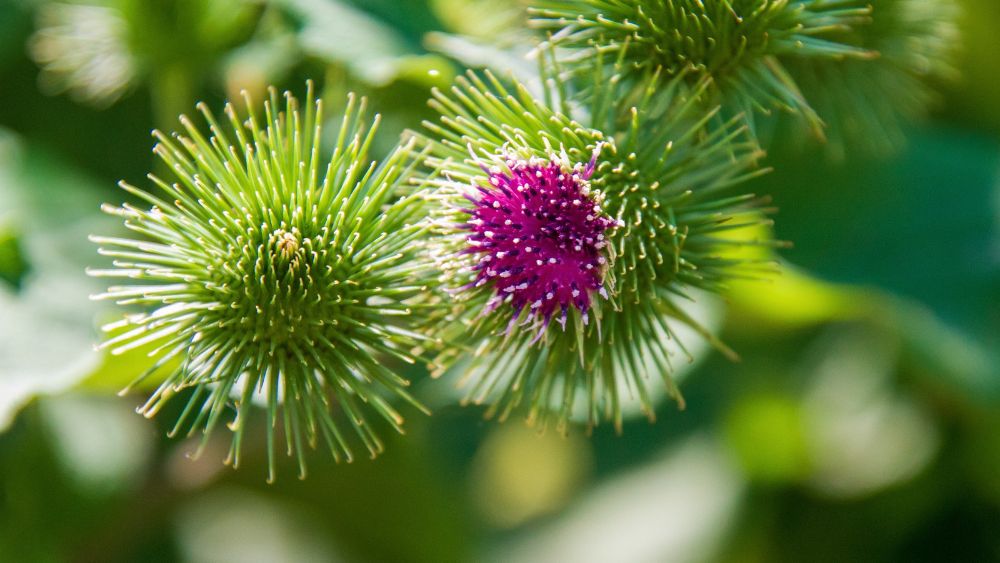
One of my favourite plants in the forest is the balsam fir (Abies balsamea). Young shoots, which are paler and grow on branch tips, are harvested in the spring. After a full day of fishing and other activities, treat yourself to a delicious, soothing cup of balsam fir tea. With so many plants and recipes out there, investing in a good field guide to forest plants in Quebec is a must!
Identifying plants
Make sure your identification book has drawings (not just photos) that help you identify the plant by the shape and distribution of its leaves, stem, flowers, colours and roots. The book should also clearly identify its habitat and scent, if it has one. The golden rule when harvesting wild plants is never to pick more than a third of a clump or the mother plant (which is larger than the others and generally in the centre of the clump). When harvesting roots, don’t pull up the plant, but dig up some of the roots, taking only what you need and burying the rest.
Mushrooms
Identifying and picking mushrooms is a lot of fun! But it’s a vast, relatively little-known world that can also be deceptive. Sometimes, the only difference between two mushrooms—one edible, the other poisonous—is in the microscopic spores they produce. If you’re just starting out, I strongly recommend that you go with a specialist, or pick only the species you can identify without any doubt whatsoever. I spent my first two years picking only one mushroom from each species, learning how to properly identify it with the help of reference books. To identify a mushroom, you can’t rely on its appearance alone. You have to smell it and examine the shape of its stem and cap, the appearance of its gills, and its sometimes very subtle colours. You also need to cut it open to see the flesh inside and perform what’s known as a spore test (drawing out the spores on a tissue to see their colour). Identifying mushrooms isn’t an easy task and shouldn’t be taken lightly!
There’s a false belief going around stating that if a mushroom is white, it’s safe. To demonstrate just how wrong this statement is, the image below shows an Amanita virosa (commonly known as the Destroying Angel), which is the most dangerous mushroom in Quebec. It’s toxic and deadly! Yet it bears a striking resemblance to the ordinary supermarket button mushroom. So . . . BE CAREFUL!
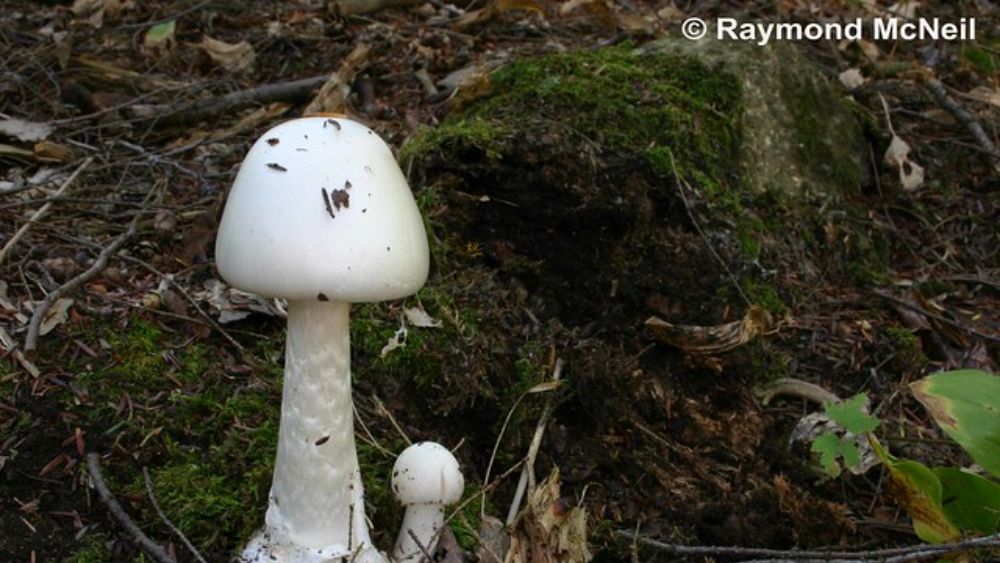
On the other hand, this mushroom is a trompette de la mort (black trumpet). Despite its appearance (and name) it’s very edible—so long as you’ve identified it correctly.
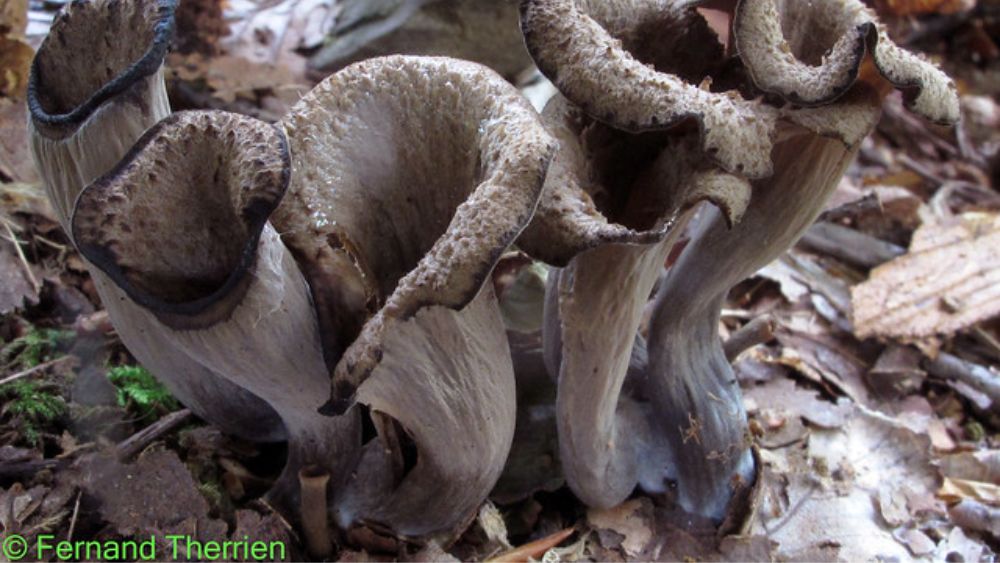
A few mushrooms for beginners
The common chanterelle is one of the easiest mushrooms to identify and is easily found in Quebec. Its yellow colour, “false” gills (or ridges) that extend down the stem and trumpet-like shape make it an ideal mushroom for new foragers. It’s also an excellent edible with a delicate taste and fruity (apricot) aroma.
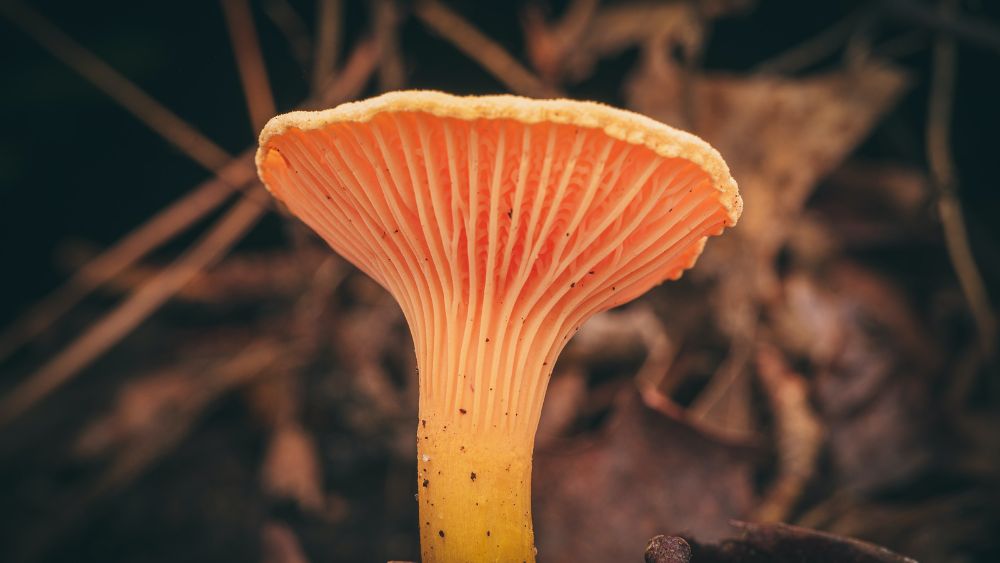
Harder to find than chanterelles, the hedgehog mushroom (Hydnum repandum), also known as Sweet Tooth, is another delicious and easy-to-identify fungus, with no poisonous lookalikes! This is a toothed mushroom that has small tubes instead of gills. It also has a very easily identifiable colour and shape.
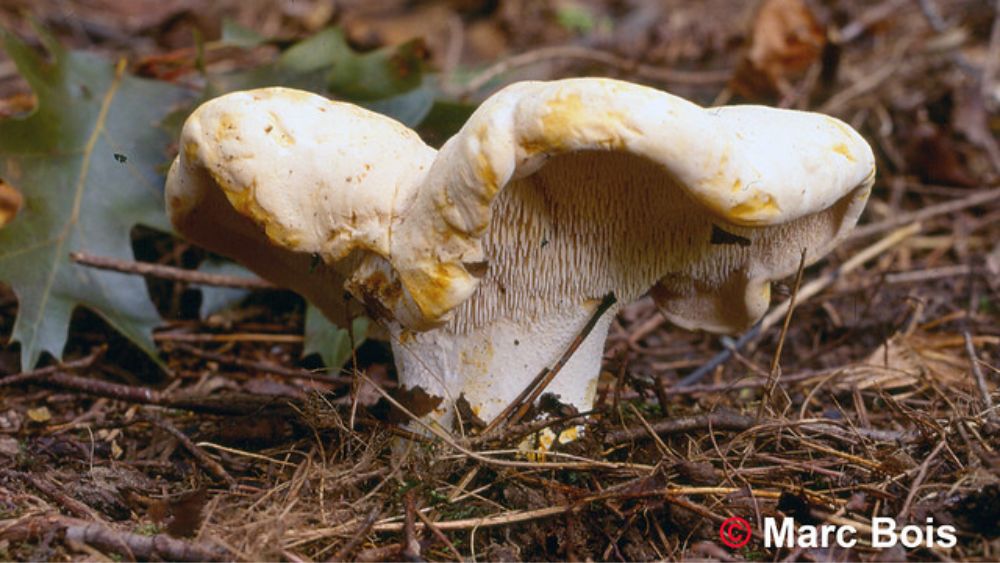
The porcini (also known as king bolete or cep) is found in significant quantities in our forests. Although edible, it doesn’t have a very distinctive or sought-after flavour. Moreover, it can be confused with other mushrooms in the Boletus family, some of which are not edible. Hence the importance of having a good identification book.
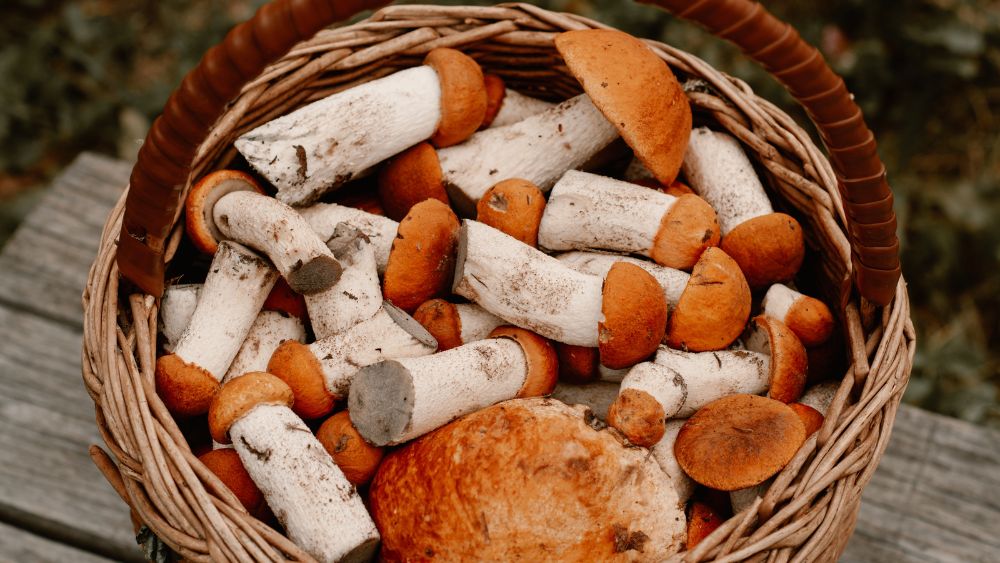
Lastly, the fly agaric might be a beautiful, showy mushroom with a reddish-orange rounded cap and white spots, but it’s inedible and toxic. Look familiar? They’re known by many as the Smurfs’s houses!
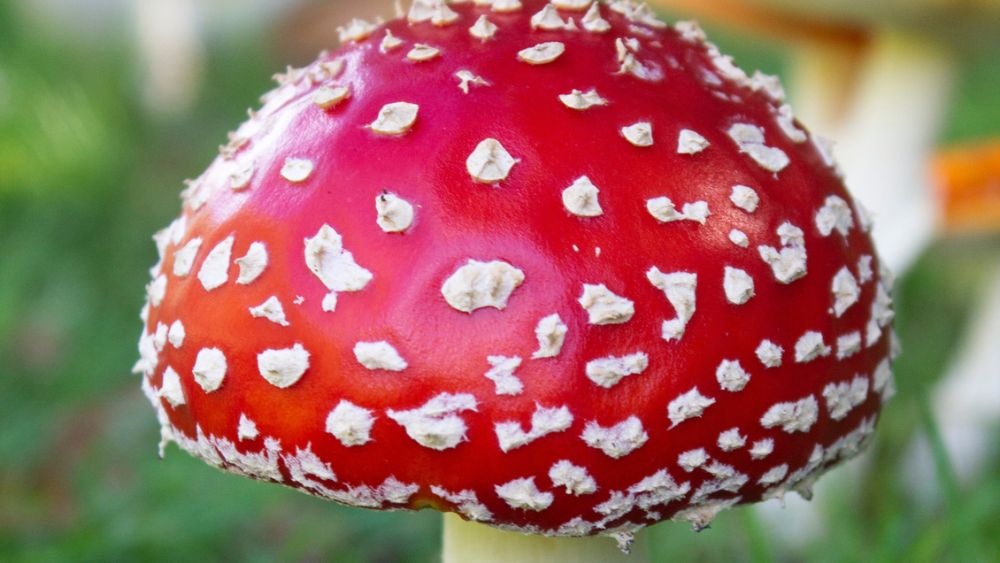
All in all, harvesting non-timber forest products (yes, that’s what they’re called) is a fun and educational activity. Just make sure you’re well informed, and don’t take any risks if you plan on eating them! You can pick wild mushrooms on your own at any outfitter, but some offer guided picking tours (see the list below). Alternatively, you can always take a course with a professional herbalist or mushroom specialist. Happy foraging!
Guided picking offered
Seigneurie du Triton (Mauricie)
Self-picking
Pourvoirie Domaine Desmarais (Mauricie)
Pourvoirie J.E. Goyette (Mauricie)
La Pourvoirie du Lac Oscar (Mauricie)
Pavillon Basilières (Lanaudière)
Pourvoirie Pignon Rouge Mokocan (Lanaudière)
Pourvoirie Cockanagog (Laurentides)
Pourvoirie des Trois Lacs (Bas-Saint-Laurent)
Pourvoirie Némiskau (Mauricie)
Written by Anne-Marie Royer, consultant in tourism development, sustainable development and training at the Québec's Outfitters Federation.
